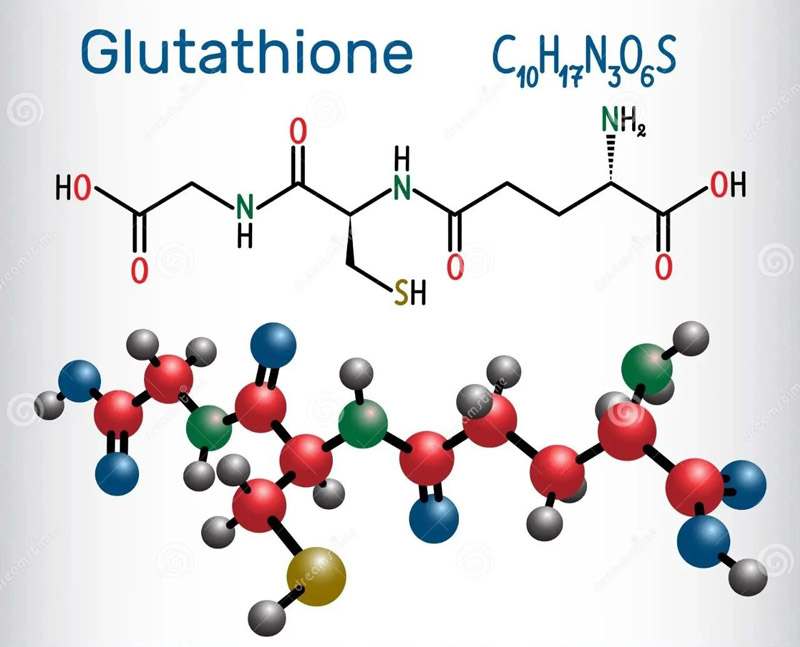What is glutathione?
Glutathione is the main antioxidant in the body and therefore plays an important role in controlling oxidative stress in the body. It is mainly composed of three amino acids, including cysteine, glycine and glutamic acid.
Since it is an antioxidant, reduced glutathione (GSH) is its active form, which neutralizes free radicals and converts to oxidized glutathione disulfide bonds (GSSH).
The oxidized form of GSSH is then returned to the reduced form of GSH.
Benefits of glutathione
1. Although glutathione plays a key role in controlling oxidative stress in the body
Glutathione helps recycle other antioxidants, such as vitamin C and vitamin E.
Oxidative stress can lead to tissue and cell damage, even at the mitochondrial level.
Mitochondria are crucial for the body’s energy production.
Glutathione is essential for protecting mitochondria and thus energy production.
2. Detoxification is another important function of glutathione
Including the elimination of environmental toxins and endogenous metabolic toxins in the body.
The liver and other detoxification organs such as the kidneys and lungs contain high levels of glutathione, which plays a vital role in detoxification.
Constant exposure to toxins can cause glutathione levels to drop.
3. Glutathione plays a key role in immune function
Glutathione is involved in increasing the number of natural killer cells and promoting T cell function.
By increasing the number of multiple immune cells, glutathione supports both the innate and adaptive immune systems.
Studies have shown that liposomal glutathione supplementation can enhance the function of natural killer cells.
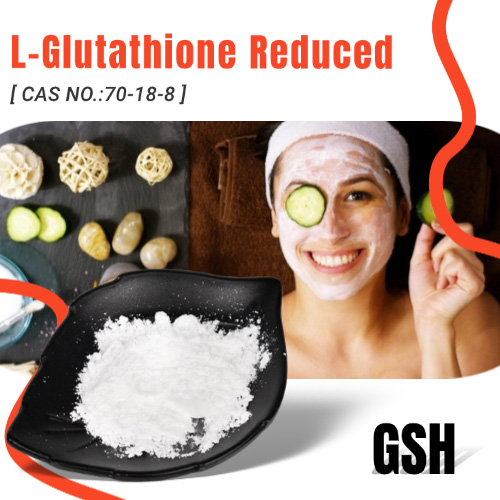
Increased glutathione demand
As the main antioxidant in the body, glutathione is essential for human health.
With the onset of chronic disease, increased inflammation and oxidative stress can lead to an increased demand for glutathione.
With age, the amount of glutathione in the body decreases and the level of oxidative stress increases.
Many types of infections have been linked to low levels of glutathione, including viral infections such as COVID-19, influenza and HIV.
Certain chronic infections, such as Borrelia burgdorferi infection, affect an increasing number of people, and these infections are also associated with low levels of glutathione.
Neuroinflammation has been linked to neurodegenerative diseases such as dementia in adults and autism spectrum disorders in children. Chronic neuroinflammation leads to glutathione depletion.
Individuals with chronic cardiovascular disease, lung disease, and liver disease often present low levels of glutathione, a status strongly associated with the severity of the disease.
Questions about glutathione supplements
Since glutathione is an important antioxidant in the body, how to efficiently supplement it has become the key problem.
Glutathione can switch quickly between the reducing and oxidizing states, so when taken directly by mouth, it is oxidized in the stomach and the active form cannot be absorbed.
The human digestive tract contains large amounts of gamma-glutamyltransferase (GGT) and is able to recycle glutathione precursors, potentially significantly reducing the effective absorption of GSH from oral glutathione supplements.
To protect glutathione from destruction, lipid-coated liposome technology has been developed that surrounds glutathione through a lipid shell.
Intravenous (IV) glutathione is adopted by many clinicians, but frequent long-term use is not practical due to cost and time factors.
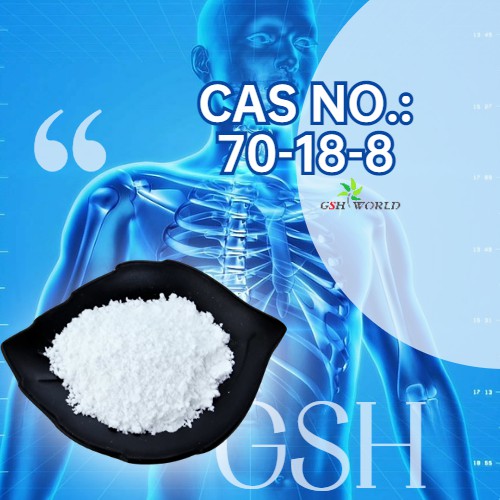
Transdermal, nasal, and atomized glutathione inhalation are other forms of supplementation, but they are less studied and less available.
Clinicians may also supplement with glutathione precursors, such as n-acetylcysteine (NAC).
The following is a review of studies on glutathione absorption and its clinical effects to evaluate the effects of different glutathione supplementation approaches.
We focused on in vivo studies in order to show clinicians how best to administer a glutathione supplementation regimen to patients.
Studies on oral glutathione
The initial supplemental studies of oral glutathione were based on unmodified reduced GSH without any changes in its molecules and without the addition of lipids to form liposomes.
In 1992, seven volunteers were given a one-time dose of 3 grams of GSH, but no increase in blood GSH levels was observed.
A randomized, double-blind placebo-controlled trial was conducted in 2011 with 40 participants taking 500 mg twice daily for 4 weeks.
Markers of oxidative stress did not decrease, and total reduction, GSH, oxidizing GSSH, and GSH/ GSSH ratios did not increase.
Because neither glutathione nor oxidative stress markers changed, oral glutathione in its original form was not considered a suitable supplemental choice for glutathione.
Based on these results, the company developed a patented liposomal glutathione preparation. Several of these formulations have been studied for their absorbability and whether they improve clinical symptoms.
One of the patented liposomes, glutathione, was given to half of the participants in a low daily dose of 250mg and the other half in a high dose of 1,000 mg for six months in a randomized controlled trial.
Both doses increased glutathione levels, with the higher dose group showing greater improvement.
After 6 months, 1000mg high dose supplementation increased the content of GSH (i.e. the reductive active form) in red blood cells, plasma and lymphocytes by 30-35%, which was statistically significant (P<0.05).
In terms of immune function, the detection of natural killer cytotoxicity showed a more than two-fold increase in the high-dose group after three months (P<0.05).

In the assessment of oxidative stress, the ratio of oxidized to reduced glutathione in whole blood showed a decreasing trend at the end of the study.
Another patented liposomal glutathione was investigated for absorption and immune function.
The study involved individuals with glutathione levels in the low part of the normal range who received either 500mg or 1,000 mg daily doses for one month.
At the end of the study, no significant differences were found between the dose groups.
The maximum glutathione level increase at a 500mg daily dose was achieved after two weeks, specifically: whole blood +40%, red blood cells +25%, plasma +28%, PBMCs +100% (P<0.05).
Oxidative stress markers were significantly reduced and positively correlated with increased levels of glutathione.
Immune indexes also showed an enhanced trend, the cytotoxicity of natural killer cells increased by 400% within two weeks, and lymphocyte proliferation increased by 60% within two weeks, both reaching statistically significant levels (P<0.05).
Studies of glutathione for topical/percutaneous applications
Topical or percutaneous administration of glutathione is an easy way to supplement glutathione, but initial studies did not support its efficacy.
The study compared the effects of oral liposomal glutathione with percutaneous glutathione in children with autism spectrum disorder and low baseline glutathione.
Over the course of eight weeks, transdermal and oral liposomal glutathione doses started at one-quarter of the recommended amount and gradually increased until the full body weight dose was reached after four weeks and continued at this dose.
The results showed that children in the oral glutathione group had significantly increased plasma glutathione, along with increased levels of sulfate, cysteine and taurine. 15 (Kern).
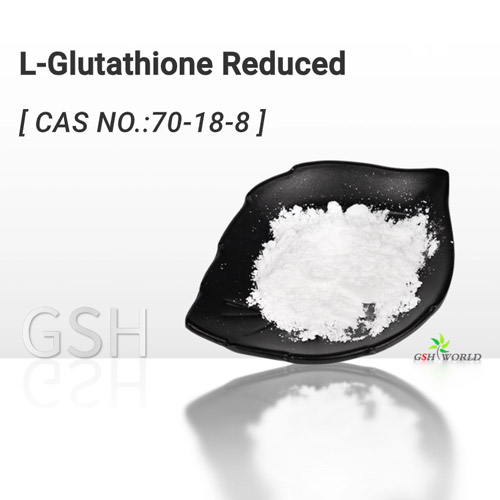
Plasma sulfate, cysteine and taurine levels also increased significantly in the transcutaneous glutathione group, but plasma glutathione levels did not change significantly.
The findings raise concerns about the effectiveness of transcutaneous glutathione in raising plasma glutathione levels.
In a manner similar to that used to improve oral glutathione for increased absorption, a locally modified version of glutathione called the glutathione-cyclodextrin nanoparticle complex (GSH-CD) was developed.
The study looked at participants’ absorption of GSH-CD and immune markers after three days of exposure to Mycobacterium avium.
After three days of topical GSH-CD application, GSH levels in blood monocytes and red blood cells increased, while levels of malondialdehyde, a marker of oxidative stress, decreased.
Increased cytokine levels in immune markers and enhanced ability to clear Mycobacterium avium infection were associated with the application of topical GSH-CD.
The study showed that modified percutaneous or topical glutathione was able to increase glutathione levels in blood cells, an effect that had not been shown in previously unmodified topical glutathione.
Research on intravenous glutathione
Preliminary intravenous glutathione (IV) studies have shown a significant increase in total glutathione and cysteine concentrations in plasma following 2 grams of glutathione infusion.
During the first 90 minutes after infusion, glutathione excretion increased 300-fold and proceeded at a constant rate, corresponding to a half-life of 14.1±9.2 minutes.
Subsequent studies of intravenous glutathione have focused more on clinical symptom improvement than in vivo absorption studies.
Two studies in Parkinson’s disease patients showed clinical improvements with daily intravenous administration of glutathione for a month, but in both studies, these clinical improvements reverted to baseline levels about two months after stopping glutathione therapy.
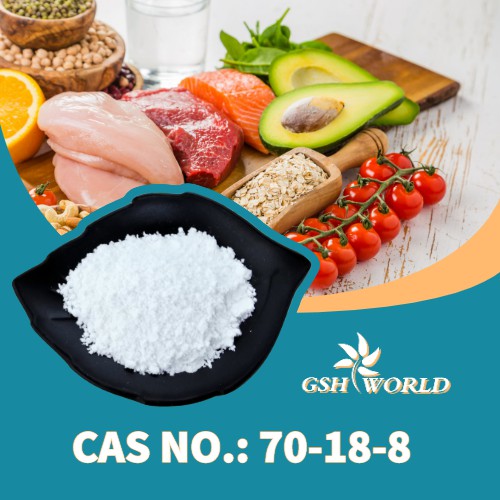
Clinical studies have compared intravenous glutathione with oral n-acetylcysteine (NAC) for the prevention of oxidative stress damage caused by coronary angiography.
Intravenous administration of glutathione prevented the increase in oxidative stress markers as expected, while oral NAC had no effect on oxidative stress markers.
Based on limited research, intravenous glutathione appears to have effectively entered the bloodstream. However, it is worth paying attention to the duration of this effect because its half-life is very short.
Study on nebulizing and nasal administration of glutathione
Intranasal and aerosolized glutathione has been utilized and is mainly used in nasal and lung diseases.
But absorption studies are scarce.
A safety study of intranasal administration of glutathione revealed that 62% of patients experienced relief of symptoms after use, although 12% experienced side effects.
Intranasal glutathione is closely linked to the nervous system and is therefore also used in the study of neurodegenerative diseases.
One study showed that high doses of intranasal glutathione improved symptoms of Parkinson’s disease, but the results were not statistically significant.
N-acetylcysteine (NAC) supports glutathione
N-acetylcysteine (NAC) is often used as a supplement to increase glutathione levels.
Given that cysteine is a rate-limiting factor in glutathione synthesis, this would theoretically lead to an increase in glutathione production.
One of the concerns is that with age and certain chronic diseases, particularly liver dysfunction, the body’s ability to synthesize glutathione from cysteine and other amino acids decreases.
Hereditary SNPs, including glutathione synthesis and glutathione recycling enzymes, may similarly affect the rate of glutathione production from precursor substances.
Studies on NAC have been inconsistent and cannot prove that it actually raises glutathione levels.
Studies have shown that NAC has no effect on immune function33 or antioxidant function31 in specific studies.
There is limited research on NAC as a good strategy for enhancing glutathione levels and supporting multiple glutathione functions.
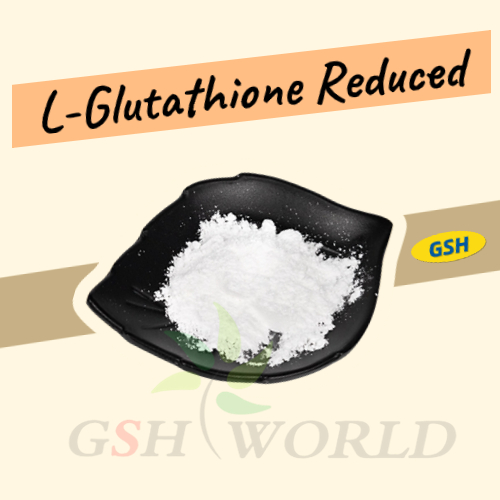
Sum up
Glutathione, as our primary antioxidant, plays a vital role in maintaining health.
Faced with today’s toxins in environmental pollution, as well as high rates of chronic disease and stress, many people are deficient in this critical nutrient.
Health care workers are constantly exploring ways to boost glutathione levels. Some studies have shown that targeted oral glutathione in liposome form and modified topical glutathione (GSH-CD) have made progress in enhancing the effect.
Improvements in clinical function have been demonstrated in the oral form of liposomes.
Although intravenous glutathione has been shown to be absorbed and improve clinical symptoms, its short half-life makes it a concern, and symptoms often rebound once intravenous administration is stopped.
Given the cost and need to be administered in a medical setting, intravenous glutathione is not practical for daily use.
Intranasal glutathione and aerosolized glutathione may be helpful as a means of targeting specific disease states, but current research is insufficient.
More research needs to done to understand how to maximize glutathione supplementation to benefit patients.
reference
- 1. Zhang H, Forman HJ. Glutathione synthesis and its role in redox signaling. Semin Cell Dev Biol. 23:722–728.
- 2. Forman HJ. et al. Glutathione: overview of its protective roles, measurement, and biosynthesis. Mol Aspects Med. 2009;30(1-2):1-12.
- 3. Pastore A. et al. Analysis of glutathione: implication in redox and detoxification. Clin Chim Acta. 2003 Jul 1;333(1):19-39.
- 4. Yuan L. et al. Glutathione in liver disease and hepatotoxicity. Aspects of Med. 2009. 29-41.
- 5. Cantin A et al. Glutathione and Inflammatory Disorders of the lungs. 1991. 169:123-138.
- 6. Guerra C. et al. Glutathione and adaptive immune responses against mycobacterium tuberculosis infection in healthy and HIV infected individuals. PLOS One. 2011.
- 7. Sinha R. et al. Oral supplementation with liposomal glutathione elevates body stores of glutathione and markers of immune function. Eur J Clin Nutr. 2018 Jan;72(1):105-111.
- 8. Morris G. et al. Redox regulation of the immune response. Cell Mol Immunol. 2022 Oct;19(10):1079-1101.
- 9. Richie JP Jr. et al. Randomized controlled trial of oral glutathione supplementation on body stores of glutathione. Eur J Nutr. 2015 Mar;54(2):251-63.
- 10. Maher P. et al. The effects of stress and aging on glutathione metabolism. Ageing Research Reviews. Vol 4(2).
- 11. Nencioni L. et al. Influenza A virus replication is dependent on an antioxidant pathway that involves GSH and Bcl-2. 2003;17:758–760.
- 12. Polonikov A. Endogenous deficiency of glutathione as the most likely cause of serious manifestations and death in patients with the novel coronavirus infection (COVID-19): A hypothesis based on literature data and own observations. ACS Infect. Dis. 2020;6:1558–156.
- 13. Ly J. et al. Liposomal Glutathione Supplementation Restores TH1 Cytokine Response to Mycobacterium Tuberculosis Infection in HIV-Infected Individuals. Interferon. Cytokine Res. 2015;35:875–887.
- 14. Peacock BN. et al. New insights into Lyme disease. Redox Biology. 2015;5:66-70.
- 15. Kern JK. et al. A clinical trial of glutathione supplementation in autism spectrum disorders. Med Sci Monit. 2011;17(12):CR677-CR682.
- 16. Hauser RA. Et al. Randomized, double-blind, pilot evaluation of intravenous glutathione in Parkinson’s disease. Mov Disord. 2009 May 15;24(7):979-83.
- 17. Tan M. et al. Glutathione system enhancement for cardiac protection: pharmacological options against oxidative stress and ferroptosis. Cell Death Dis. 2023 Feb 16;14(2):131.
- 18. Ghezzi P. et al. Role of glutathione in immunity and inflammation in the lung. Int J Gen Med. 2011;4:105–113.
- 19. Bianchi G. et al. Glutathione kinetics in normal man and in patients with liver cirrhosis. Hepatol. 1997;26:606–613.
- 20. Allen J, Bradley RD. Effects of oral glutathione supplementation on systemic oxidative stress biomarkers in human volunteers. J Altern Complement Med. 2011;17(9):827-833.
- 21. Witschi A. et al. The systemic availability of oral glutathione. Eur J Clin Pharmacol. 1992;43:667–669.
- 22. Sasaninia K. et al. Topical Absorption of Glutathione-Cyclodextrin Nanoparticle Complex in Healthy Human Subjects Improves Immune Response against Mycobacterium avium Antioxidants (Basel). 2023 Jul 2;12(7):1375.
- 23. Aebi S. et al. High-dose intravenous glutathione in man. Pharmacokinetics and effects on cyst(e)ine in plasma and urine. Eur J Clin Invest. 1991 Feb;21(1):103-10.
- 24. Hauser RA. Randomized, double-blind, pilot evaluation of intravenous glutathione in Parkinson’s disease. Mov Disord. 2009 May 15;24(7):979-83.
- 25. Sechi G. Reduced intravenous glutathione in the treatment of early Parkinson’s disease. Prog Neuropsychopharmacol Biol Psychiatry. 1996 Oct;20(7):1159-70.
- 26. Saitoh T. et al. Intravenous glutathione prevents renal oxidative stress after coronary angiography more effectively than oral N-acetylcysteine. Heart Vessels. 2011 Sep;26(5):465-72.
- 27. Mischley LK. et al. Safety survey of intransal glutathione. The J Alt and Comp Medicine. 2013 19:5, 459-463.
- 28. Mischley LK. et al. Phase IIb Study of Intranasal Glutathione in Parkinson’s Disease. J Parkinsons Dis. 2017;7(2):289-299.
- 29. Schmitt B. et al. Effects of N-acetylcysteine, oral glutathione (GSH) and a novel sublingual form of GSH on oxidative stress markers: A comparative crossover study. Redox Biology6 (2015): 198-205.
- 30. Treitinger A. et al. Effect of N-acetyl-L-cysteine on lymphocyte apoptosis, lymphocyte viability, TNF-alpha and IL-8 in HIV-infected patients undergoing anti-retroviral treatment. Braz J Infect Dis. 2004 Oct;8(5):363-71.
- 31. Rushworth GF, Megson IL. Existing and potential therapeutic uses for N-acetylcysteine: the need for conversion to intracellular glutathione for antioxidant benefits. Pharmacol Ther. 2014 Feb;141(2):150-9. doi: 10.1016/j.pharmthera.2013.09.006. Epub 2013 Sep 28. PMID: 24080471.
- 32. Paschalis V, Theodorou AA, Margaritelis NV, Kyparos A, Nikolaidis MG. N-acetylcysteine supplementation increases exercise performance and reduces oxidative stress only in individuals with low levels of glutathione. Free Radic Biol Med. 2018 Feb 1;115:288-297. doi: 10.1016/j.freeradbiomed.2017.12.007. Epub 2017 Dec 9. PMID: 29233792.
- 33. Hamzeh N, Li L, Barkes B, Huang J, Canono B, Gillespie M, Maier L, Day B. The effect of an oral anti-oxidant, N-Acetyl-cysteine, on inflammatory and oxidative markers in pulmonary sarcoidosis. Respir Med. 2016 Mar;112:106-11. doi: 10.1016/j.rmed.2016.01.011. Epub 2016 Jan 22. PMID: 26831541.

